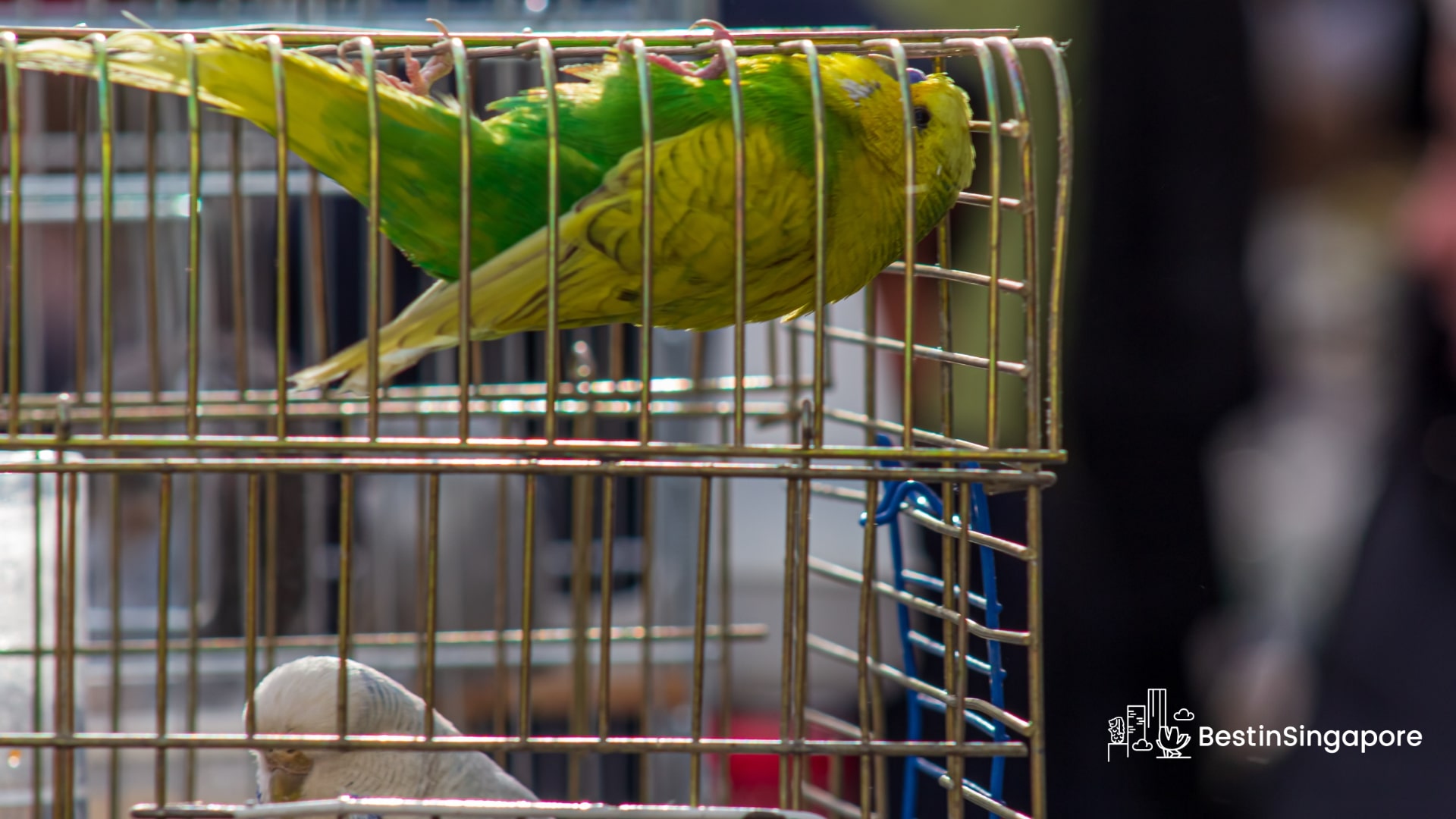A Symphony of Birds: The Kebun Baru Bird Singing Club
Singapore offers countless exciting things to do, especially in its Central Area, but there are also activities in regions far away from the city that are just as fun and memorable. One activity I’d recommend is visiting the Kebun Baru Bird Singing Club.
Located in Ang Mo Kio, the Kebun Baru Bird Singing Club is as exciting as you would expect. It’s a club of birds inside cages filling the air with music!
If you’re interested in learning more about these songbirds, read on. This article will discuss how this club started and what activities you can expect there.
Background on the Tradition of Singing Birds
— From: _lemondrip
People have made pets of songbirds for roughly three decades. Back in the day, people caught wild songbirds; then, they trained the animals and put them near a trap with birdseed to lure in even more wild birds.
This hobby continued to flourish until a community dedicated to songbird owners was formed. The Kebun Baru Bird Singing Club was founded by Robin Chua in 2008 as an informal bird singing corner where songbird owners come together for fun.
At the time, club members pooled their resources to make platforms from which their birds could perch. This club continued to grow throughout the years until it became a fun destination for tourists and local visitors as well.
How to Get to the Kebun Baru Bird Singing Club
Address: Block 159 Ang Mo Kio Ave 5, Singapore 560159
MRT: The MRT is the best transport option to get to the Kebun Baru Bird Singing Club. You only have to ride the train and get off at either Yio Chu Kang station or Ang Mo Kio station. From there, you walk to the club.
Bus: Another mode of public transportation you can try is riding the bus. The nearest bus stops are 54041, 54051, 54469, 54049, and 54059.
Car: For car owners, there are several car parks near the club, such as A78 Carpark (161 Ang Mo Kio Avenue 4) and Car Park 20 (166 Ang Mo Kio Avenue 8).
Best Time to Visit
— From: adriandoestheworld
Technically, the Kebun Baru Bird Singing Club is open every day from 6 am to 5 pm, so you can come whenever you want. That said, I recommend coming here early in the morning because events are usually held around 9:30 am.
Additionally, there’s just something so peaceful about listening to birds singing at 6 am. Sometimes, I even come here with a packed breakfast; I like drinking my cup of kopi and eating my kaya toast while listening to the songbirds.
What to Expect
A Field of Birdcages
— From: ef_singapore
The first thing you’ll notice when you visit the Kebun Baru Bird Singing Club is the expansive field filled with poles holding birdcages.
If you come earlier—around 6 am—you might even witness something even more interesting: the club members raising the birdcages to the top of the pole like how flags are raised in every school morning assembly!
The first time I witnessed this activity, I was confused and fascinated at the same time. So, I asked around and learned that they raise the birdcages to the flagpoles to make the birds comfortable; wild songbirds tend to perch from tall trees, after all.
But not all birds have to be raised on top of flagpoles. There are others—like the Chinese thrush or white-rumped shama—that prefer to hang from low-hanging hooks, nestle in bushes, or even be placed on the floor.
The Largest of Its Kind in Singapore
— From: 2ndsinga
Many people like to claim that the Kebun Baru Bird Singing Club is the only one of its kind in Singapore, but that would be a lie because there are other bird attractions on the island.
The more accurate statement would be that the Kebun Baru Bird Singing Club is the largest of its kind in Singapore. Its field is the size of two soccer fields, which is why it can accommodate hundreds of poles.
Operated by Passionate Volunteers
— From: henrykweksg
Another thing I love about the Kebun Baru Bird Singing Club is the fact that it’s operated by volunteers. These volunteers are responsible for maintaining the field of flagpoles and the shelters built in the area and ensuring that all the birds are comfortable.
It’s lovely seeing these volunteers pouring their heart out to the community. You can feel their passion for the birds.
Additionally, since the club consists of volunteers, visitors don’t have to pay a fee to enjoy the activities here. The club gets its funding from donations, so if you really want to support this venture, you can spare a few dollars for them.
Incredibly Valuable Birds (Costing Around Thousands of Dollars!)
— From: trulyexpattravel
At first glance, songbirds may not seem much; they’re small, probably the size of your fist. But despite that, did you know that these creatures are actually ridiculously expensive?
How expensive, you ask? Apparently, they can fetch up to S$98,000!
— From: andewmole
From what I can understand after my conversation with songbird owners, this hefty price tag is due to the fact that songbirds are extremely rare. Many of them are caught in the wild, while others are specially bred and imported from other countries.
Moreover, songbirds have to be trained to become powerful singers, so there’s also the labor of the breeder or owner to consider. So, for experienced and passionate owners, songbirds are worth the price.
That said, it’s still possible to find a songbird from your local bird shop; you can get one for as little as S$80. It’s likely that the bird isn’t specially bred and trained.
Highly Competitive Singing Events
— From: lilytoh
My favorite part of the Kebun Baru Bird Singing Club is the singing competition that occurs every month. Owners can bring their songbirds to participate in the event, and winners get to take home a trophy.
Participants sign up for the event and pay a small fee to cover the prizes. For non-participants, admission is free.
Around 8:30 am, the competition begins. All songbirds will perform at the same time, which may seem unreasonable, but the judges are skilled in distinguishing the sounds from one another.
Then, they give points based on several things, like pitch, melody consistency, and concluding tone.
— From: yuri.shoots
It usually takes around four rounds of performances before the judges deliberate for some time. To ensure that the judges hear the songbirds perfectly, spectators are advised not to make too much noise.
Once the judges have made their decision, it’s time for the awarding ceremony to start, and it’s just as fun as the main event. Winners accept their trophies with proud grins, while those who didn’t win still receive cheers and congratulations.
To make things better, the awarding ceremony hosts a lucky draw for everyone, including spectators. If you participate, you might win all sorts of prizes like a new rice cooker, electric boiler, and others; the whole event is really just one happy affair.


